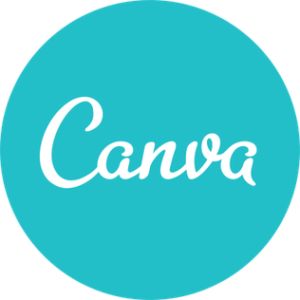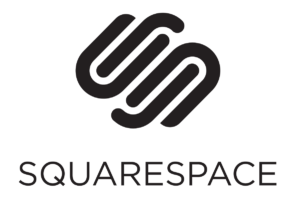As you’ve already learned from this blog, there are many ways to earn passive income. You could publish an eBook, create an online training course, sell your own artwork online, and more. However, the most effective passive income strategies generally involve some degree of online presence. That’s why it’s important to take advantage of key online tools that can help you attract more customers.
The following resources are useful for almost anyone trying to earn passive income online:
Canva
 If you want to sell an eBook, you will first need to create a good-looking cover, because, contrary to the old adage, people actually do judge books by their covers. Regardless of how wonderful your content is; most potential customers won’t be interested in your book if your presentation appears unprofessional.
If you want to sell an eBook, you will first need to create a good-looking cover, because, contrary to the old adage, people actually do judge books by their covers. Regardless of how wonderful your content is; most potential customers won’t be interested in your book if your presentation appears unprofessional.
Luckily, there’s Canva, an intuitive, easy-to-use, online, graphic design program. There’s also a Canva app, although its features are somewhat limited when compared to what’s available on the website. This popular tool is used by more than 10 million people across the globe.
Canva makes graphic design easy by providing users with a variety of templates for different types of materials, including eBook covers, Facebook posts, and banners. It boasts a wide range of fonts, a collection of royalty-free images, and pretty much everything else you need to design your branded images on a budget. You’ll need to practice with the tool a little bit before you can truly design impressive materials, but the learning curve is not very steep. According to the website, it only takes 23 seconds to learn how to use it.
Squarespace
 No matter what kind of business you create, it will need to have an attractive and easy-to-use website. Unfortunately, most people don’t have a lot of experience in web design. Thus, it’s a good idea to make use of a service like Squarespace, which can greatly simplify the process.
No matter what kind of business you create, it will need to have an attractive and easy-to-use website. Unfortunately, most people don’t have a lot of experience in web design. Thus, it’s a good idea to make use of a service like Squarespace, which can greatly simplify the process.
Squarespace is ideal for people who need a website and have neither the time nor the money to hire a web designer. The great thing about it is that it offers a wide variety of templates that are easy to customize. For optimum results, you should research which templates are best-suited to your specific purpose; some templates are more effective for blogging, for example, while others are ideal for processing transactions for an online store.
Because you will still need to generate your own images and content, it will take some time to get your website up and running. But the process is much faster (and much more affordable) than it would be if you were starting from scratch.
Upwork
 You might have to occasionally enlist the services of a freelancer when you first start your passive income business. For example, if you plan to write an eBook but don’t have much skill as a writer, you’ll need to hire a ghostwriter. Likewise, if you’re not confident that you can master a design tool like Cava to create an eye-catching cover, you’ll want help from a professional graphic designer.
You might have to occasionally enlist the services of a freelancer when you first start your passive income business. For example, if you plan to write an eBook but don’t have much skill as a writer, you’ll need to hire a ghostwriter. Likewise, if you’re not confident that you can master a design tool like Cava to create an eye-catching cover, you’ll want help from a professional graphic designer.
One of the best places to find freelancers is the Upwork platform. With its handy tiered pay categories, you can search for beginners who’ll accept low pay, professionals who have sufficient experience to charge a moderate fee, or experts who charge premium rates.
Obviously, the pay rate reflects the quality of the work. But, depending on your needs, it’s unlikely at any point that you’ll have to hire someone who is an expert. Most graphic designers with only a little experience can create suitable branded imagery. Similarly, there are plenty of talented young writers who simply don’t have enough experience yet to justify charging higher rates.
Social Media
Social media plays a critical role in many passive income businesses. Along with your website, social-media platforms give you the opportunity to directly engage with customers.
Best of all, social-media accounts are free. It costs absolutely nothing to create a Facebook business page, Twitter account, etc.
Different types of businesses benefit from different social-media platforms. Therefore, it’s important that you research your target demographic before creating your accounts. Millennials, for example, tend to use Snapchat much more than older generations do. Thus, you shouldn’t rely on Snapchat if your audience primarily consists of people over the age of 40.
You should also research the relevant hashtags that you can employ to reach more customers. Once you’ve established a solid social-media presence, you can either post content yourself or hire a freelancer to do it fo

